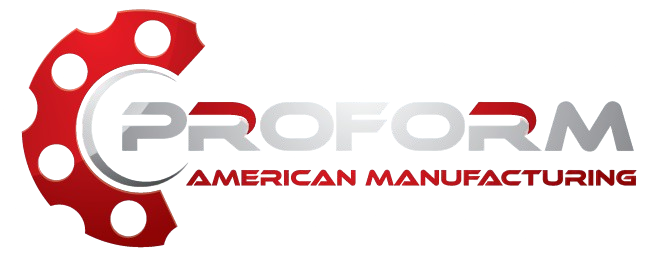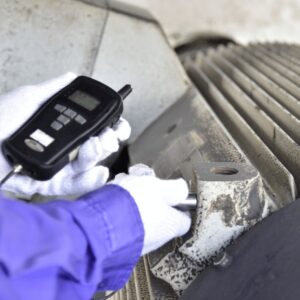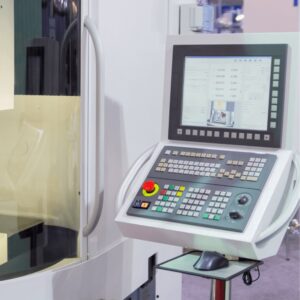Predictive Maintenance Tools in CNC Precision Manufacturing
In CNC precision manufacturing, predictive maintenance is a critical process that ensures that machines operate optimally. This reduces unplanned downtime and increases productivity. A predictive maintenance strategy is analyzing data to detect potential problems before they occur. The process allows for timely maintenance and repair. In recent years, advancements in asset maintenance technologies have led to the development of predictive maintenance tools. These tools enable CNC manufacturers like Proform Manufacturing to optimize their maintenance practices and improve production efficiency.
The vibration analyzer is one of the most common predictive maintenance tools in CNC precision manufacturing.
Proform Manufacturing knows all too well about preventative maintenance and having a predictive maintenance strategy. In CNC precision manufacturing, machines must operate with high accuracy and precision. Any issues with these machines can result in significant downtime, delays in production, and increased costs. These indicators are where vibration analyzers come into play. Vibration analysis is essential for predicting and detecting machine faults before they cause significant problems. A maintenance team can capitalize on predictive maintenance tools like the vibration analyzer.
By analyzing the vibration patterns of a machine, a technician can identify issues, such as misalignment, imbalance, or bearing wear. This information can then be used as a predictive maintenance system for scheduled maintenance and repair. This prevents unplanned downtime and reduces the risk of catastrophic failures.
Vibration analysis involves monitoring the vibration levels of machines and identifying any changes in their frequency and amplitude. The sensor data collected from vibration analysis identifies each potential problem and fault in the devices. These can be issues such as misalignment, unbalance, and bearing wear. By detecting these issues early on, maintenance personnel teams can schedule repairs before the machines fail. Predictive maintenance work reduces downtime and helps to avoid costly repairs.
Another popular predictive maintenance tool is the thermal imaging camera.
A thermal imaging camera can be beneficial to CNC small part manufacturers in several ways:
- Detecting temperature anomalies: Thermal imaging cameras have several predictive maintenance benefits. First, they can see temperature changes in materials, which helps identify defects or issues with the manufacturing process. By using a thermal imaging camera, manufacturers can identify hot spots or areas of high heat. These devices may indicate problems with the machining process or the tooling. This information can help the manufacturer optimize asset performance in manufacturing and reduce the likelihood of defects.
- Quality control: Various thermal imaging cameras can help identify defects or anomalies in small parts during the manufacturing process. They can help ensure the final product meets the required specifications and quality standards. Manufacturers can identify areas of concern by detecting temperature changes or hot spots in part. This asset maintenance strategy may require further inspection or quality control measures.
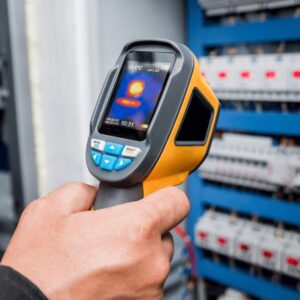
- Energy efficiency: Using a thermal imaging camera to detect areas of heat loss or inefficiency in manufacturing. Manufacturers can optimize their energy usage and reduce costs. For example, manufacturers can adjust the temperature or insulation to improve energy efficiency. They use the tool to identify heat loss areas in a furnace or kiln.
- Safety: A thermal imaging camera detects hot spots or areas of high heat in machinery or equipment, which can help identify potential safety hazards. This information can help adjust or repair the equipment, reducing the risk of accidents or injuries.
A thermal imaging camera can provide valuable insights for CNC small part manufacturers like Proform. It may help them optimize their manufacturing processes. This predictive maintenance significant benefit can improve product quality, reduce costs, and enhance safety. When combining cameras with predictive maintenance software, the manufacturing industry benefits.
Machine learning algorithms predict maintenance requirements in CNC precision manufacturing.
Machine learning predictive algorithms increasingly predict maintenance operations requirements in CNC small parts precision manufacturing. Machine learning algorithms and artificial intelligence can identify trends. They do this by analyzing proactive maintenance data collected from sensors and equipment. These predictive algorithm patterns predict when maintenance is required.
Some specific ways in which machine learning algorithms are part of predictive maintenance in CNC small parts precision manufacturing include:
- Predicting machine failures: Machine learning algorithms can analyze data from sensors and other sources to identify patterns that may indicate impending equipment failures. For example, a predictive algorithm may detect a trend of increasing vibration levels in a machine. This could indicate a problem with a bearing. At Proform, we identify these patterns early and schedule maintenance before a catastrophic asset failure occurs.
- Optimizing maintenance schedules: By analyzing predictive maintenance technologies data on machine usage and performance, machine learning algorithms can optimize maintenance schedules. This is to reduce downtime and improve equipment performance and reliability. For example, an algorithm may recommend a preventative maintenance activity schedule. These algorithms minimize disruption to production while ensuring that critical equipment is well-maintained.
- Identifying root causes of equipment condition problems: Another feature of machine learning algorithms is that they can analyze data from various sources. This helps identify the root causes of equipment problems. For example, an algorithm may detect a wear pattern on a particular part or asset failure. These algorithms could indicate a design flaw or an issue with the manufacturing process. By identifying these root causes, manufacturers make changes to improve equipment performance, reliability and reduce corrective maintenance requirements.
- Improving efficiency and productivity: Lastly, machine learning algorithms can help manufacturers improve their maintenance strategy by reducing equipment downtime and improving equipment reliability. For example, they optimize reactive maintenance schedules and identify the root causes of problems. Manufacturers can reduce the time and resources required for corrective maintenance and repairs. This allows them to focus on production and other business priorities.
Condition based monitoring is another predictive maintenance tool used in CNC precision manufacturing.
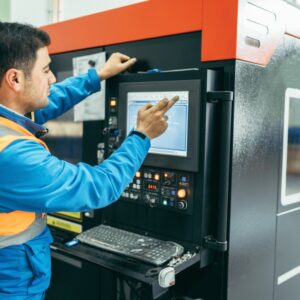 First, condition monitoring involves tracking equipment and machinery to detect changes in operating conditions. This may indicate impending failures or condition based maintenance activity requirements. Condition based monitoring (CBM) helps to predict maintenance requirements in the precision machining of CNC parts like Proform American Manufacturing. This technique uses various iot sensors and monitoring systems to collect temperature, vibration, and energy consumption data.
First, condition monitoring involves tracking equipment and machinery to detect changes in operating conditions. This may indicate impending failures or condition based maintenance activity requirements. Condition based monitoring (CBM) helps to predict maintenance requirements in the precision machining of CNC parts like Proform American Manufacturing. This technique uses various iot sensors and monitoring systems to collect temperature, vibration, and energy consumption data.
Some specific ways in which condition monitoring is present in predictive maintenance in CNC small parts precision manufacturing include:
- Vibration analysis: Vibration sensors can monitor the vibration levels of machinery and equipment. By analyzing changes in vibration levels, CBM systems can detect changes in operating conditions. CBM may indicate problems such as misalignment, unbalanced loads, or worn components.
- Temperature monitoring: Temperature sensors can monitor the temperature of equipment and machinery. By analyzing temperature changes, CBM systems can detect problems such as overheating. Data can indicate issues such as worn bearings or insufficient lubrication.
- Energy consumption monitoring: Energy consumption iot sensors monitor the energy usage of equipment and machinery. By analyzing changes in energy consumption, CBM systems can detect changes in the operating conditions of the equipment. CBM may indicate problems such as inefficient operations or worn components.
- Fluid analysis: Fluid sensors monitor the condition of fluids such as lubricants and hydraulic fluids. By analyzing changes in fluid properties, CBM systems can detect issues such as contamination or degradation. These indicators can show problems with the equipment or machinery.
For American machining companies like Proform Manufacturing, condition monitoring provides valuable insights into equipment and machinery operating conditions. Condition monitoring helps to predict condition based maintenance requirements and prevent equipment failures. CNC small parts precision manufacturers can combine CBM with other techniques, such as machine learning algorithms. They use predictive analytics to optimize their proactive maintenance manager schedules, reduce downtime, and improve equipment conditions and reliability.
Predictive and Preventive maintenance solutions go hand and hand
Preventive maintenance is an asset performance management approach to equipment maintenance involving routine maintenance tasks. These tasks are completed at regular intervals to prevent equipment failure and prolong the life of the equipment. In CNC machining and precision manufacturing, preventive maintenance ensures equipment operates at peak performance and meets the required specifications.
Some specific preventive maintenance tasks in CNC machining and precision manufacturing include:
Cleaning and lubricating: Regular cleaning and lubrication of the equipment can prevent wear and tear and reduce the likelihood of equipment failure. These practices include cleaning and lubricating the spindle, tool holders, ball screws, linear guides, and other components.
Inspecting and replacing worn parts: Maintenance inspection of equipment components such as belts, bearings, and motors help identify wear and tear, preventing equipment failure. Replacing worn or damaged components can prevent further damage to the equipment and prolong its life.
Calibrating and aligning: Routine calibration and alignment of equipment components, such as the spindle and linear guides, can ensure that the equipment operates at peak performance and meets the required specifications. 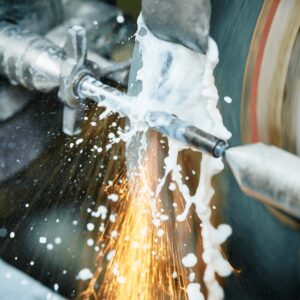
Updating software and firmware: Firmware updates ensure that the equipment operates at peak performance. It also helps make sure updates are compatible with the latest technology and software applications.
Monitoring coolant and cutting fluid: Monitoring the coolant and cutting fluid can prevent contamination. This ensures that the industrial equipment operates at peak performance.
Proform American Manufacturing utilizes predictive maintenance tools and tasks to help ensure that a predictive maintenance program is in place. A predictive maintenance strategy helps overall productivity.
Overall, preventive maintenance is crucial to CNC machining and precision manufacturing.
Manufacturers can prevent potential problems and better manage equipment failure. They do this by regularly performing routine maintenance tasks and predictive analytics. Planned maintenance can prolong the life of the equipment and reduce maintenance costs. It can help ensure that the equipment operates at peak performance and meets the required specifications.
Each predictive maintenance solution is becoming increasingly crucial in CNC precision manufacturing. By detecting potential issues early on, maintenance personnel can optimize asset reliability practices. This may reduce downtime and improve productivity. With the continued advancements in predictive maintenance technology, we can expect to see even more sophisticated predictive maintenance tools.
To learn more about the various types of predictive maintenance tools, check out this link here:
https://www.upkeep.com/learning/PMT
To learn more about the Proform Manufacturing difference, Contact Us.
